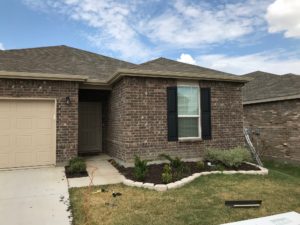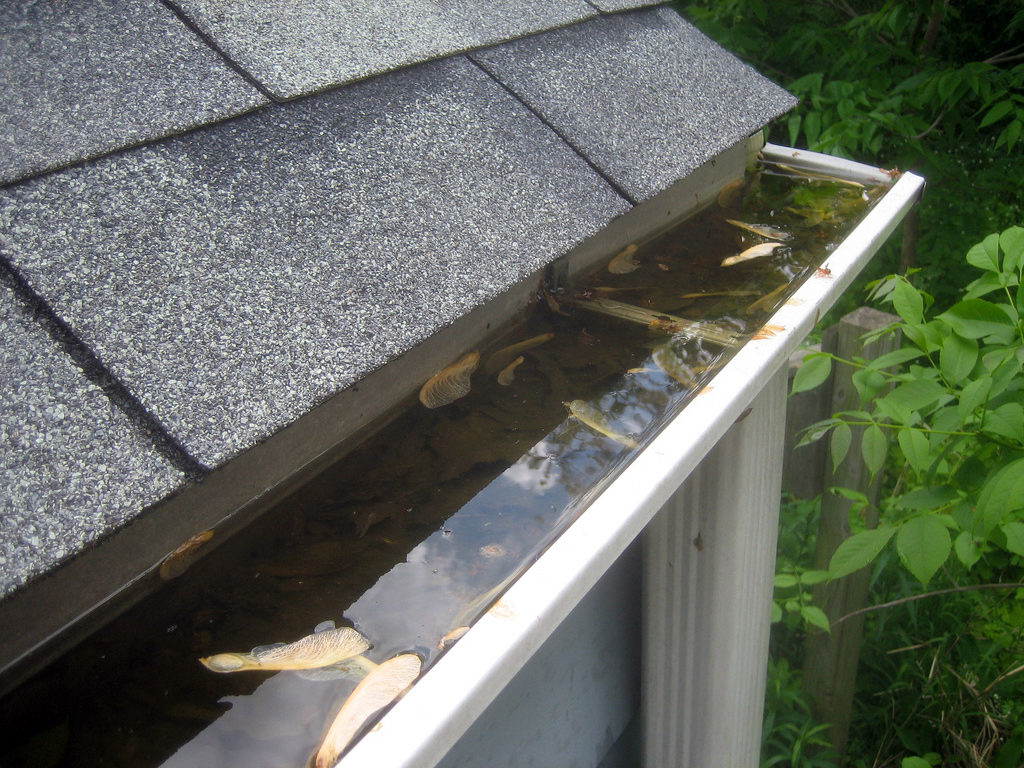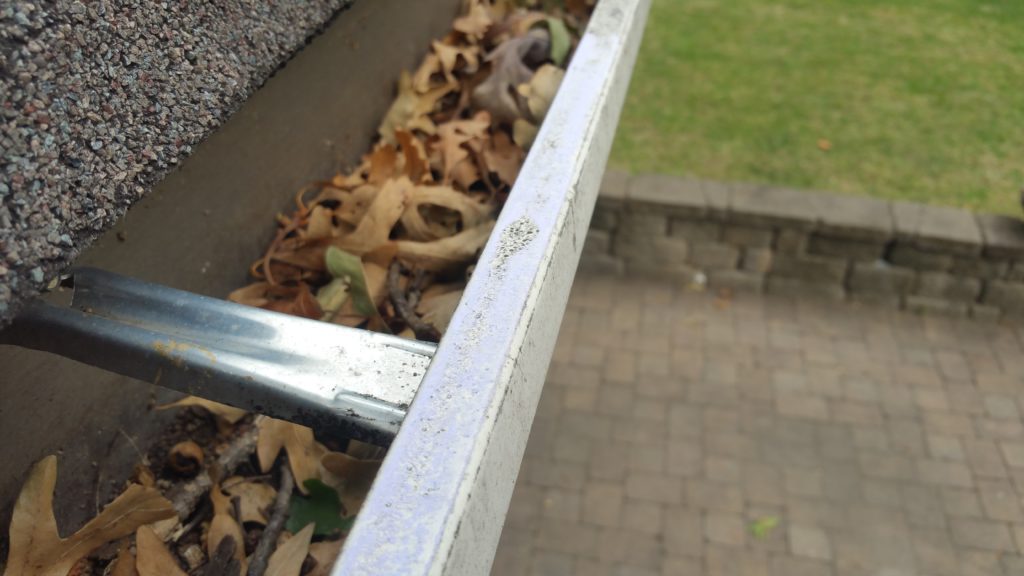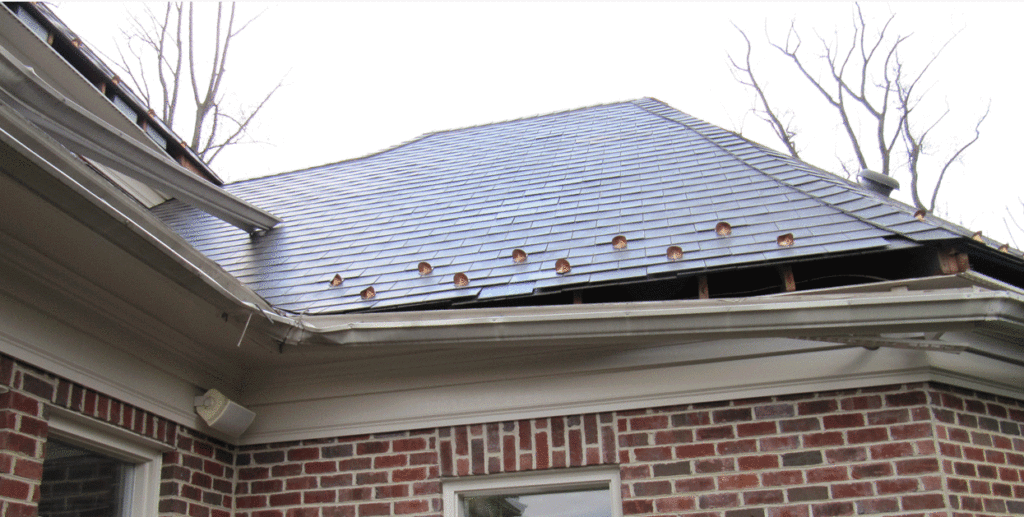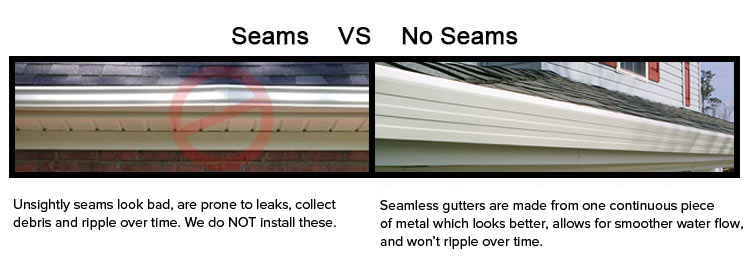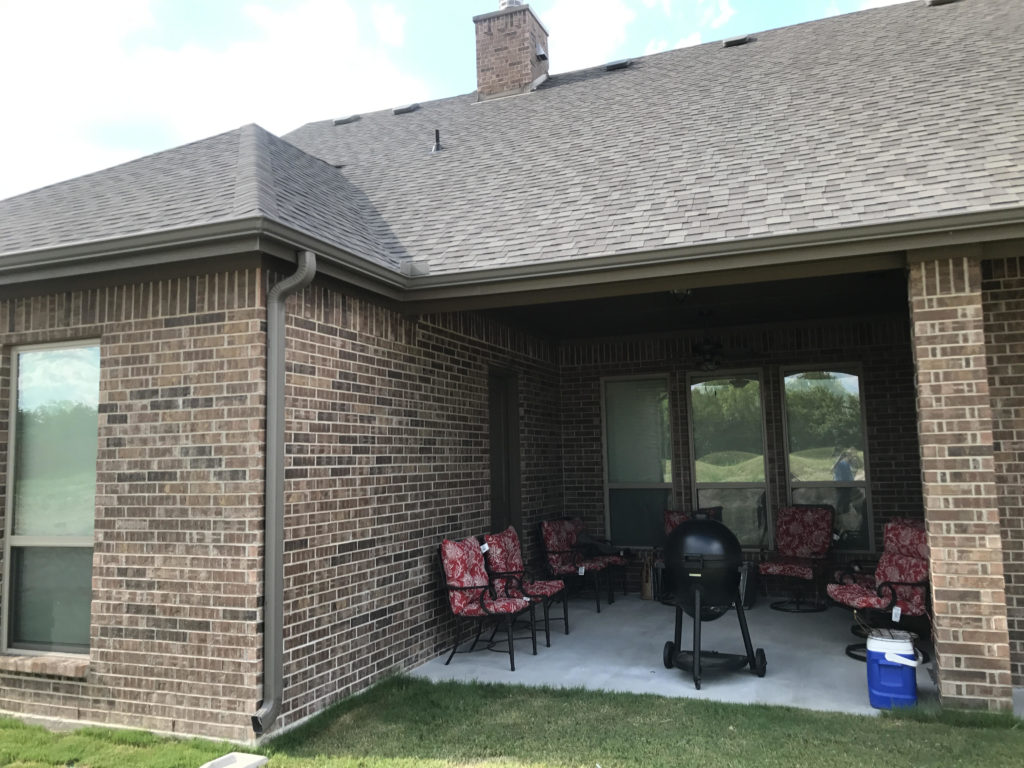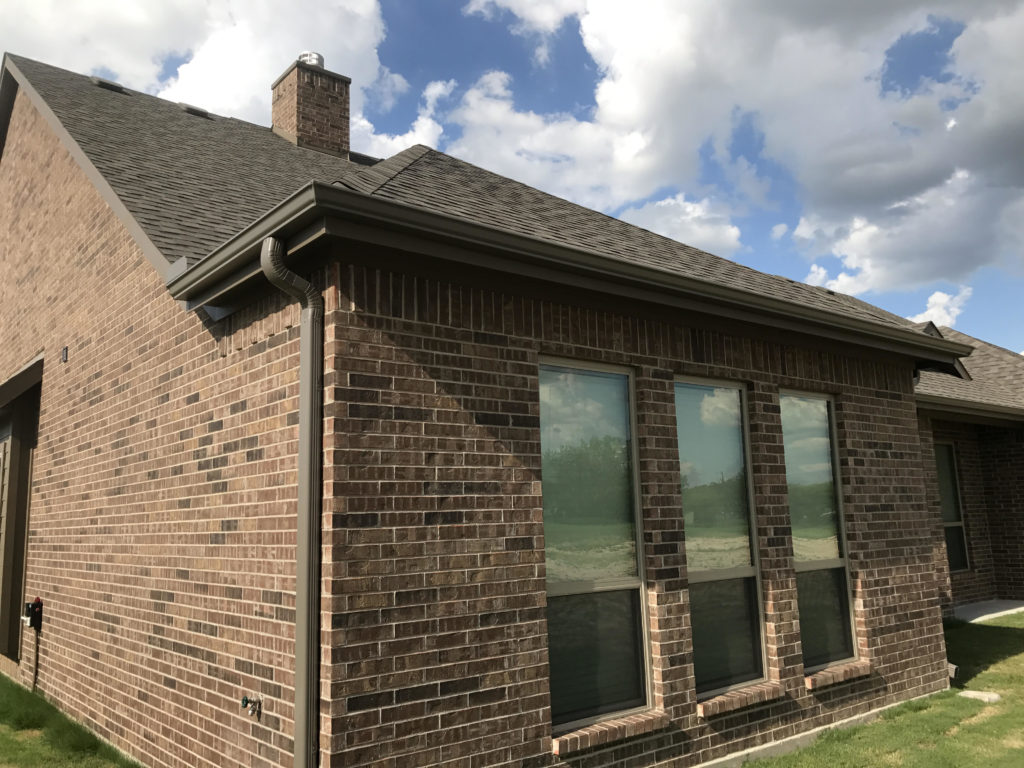Leaky Gutters in Fort Worth, TX?
Leaking gutters is a common problem for Fort Worth residences and businesses that isn’t often addressed until the homeowner or business owner sees water pouring out from the gutter, splashing onto the ground, o, worse, roof damage.
Out of sight, out of mind is unfortunately the treatment most gutters get until a serious problem arises or a massive hailstorm like we get in Fort Worth hits.
Whether you are being proactive or reactive, there is a way your Fort Worth Gutters can be improved. How? Seamless gutters.
This video shows a seam leaking. While the leak may appear to be small, it is leaking behind the gutter with the potential to cause serious damage to the roof and/or interior of the home. This shows exactly why we ONLY use seamless gutters.
Traditional gutters installed on most homes contain a seam where the gutter troughs are conjoined. Why are they done this way? Because it is a cheap and easy way for a builder or previous gutter installer to simply get the job done. Most homeowners aren’t even aware if they have seamed gutters or the cheaper seamless gutters–that is, until the seams start leaking.
Cause of Fort Worth Gutters Leaking
Improper slope. Changes in the weight of contents inside the gutter (water and/or debris) and shifting temperatures can cause gutters to sag at certain spots. When this occurs, the natural slope which drains the runoff water toward the downspout is reduced. The water then begins to overflow the sides of the guttering.
Loose fasteners. Whether your gutter is fastened to your roof with screws, hangers, or nails, these, over time, can work themselves loose. When this happens, the runoff water may flow over your gutter’s rear edge Often, this causes damage your fascia boards in the process.
Holes. After several years of use, holes can form. Tiny amounts of water pool in a certain part of a gutter section and cause rusting and corrosion over time. When this area gets weak enough, a hole is created in the gutter itself.
Cracks. Corrosion doesn’t only cause holes, it can cause cracks. Instead of occurring in the gutter trough, these typically occur at places where the fastener device passes through the metal trough or where gutter sections are joined together. These locations are especially vulnerable to water or debris accumulation, and they can sometimes separate from each other completely.
Seam separations and Joint separations. One of the weakest points of a gutter system is the seam or joint. The seams connects two areas of the gutter. CNC uses SEAMLESS gutters, where there are no seams. Rather your gutter is cut to custom length from a single sheet of metal. Thus, no seam leaks. Joints, are where water must traverse a corner before continuing toward a downspout. These joints are prone to collecting water and debris.
Downspouts. The downspouts take water that flows from gutter trough and runs it vertically down the side of your house or business. If a downspout leaks, it can impact your entire house, including structural integrity. Water can leak into the house and cause damage to the foundation and the interior of your home. Fixing a leaky downspout is essential to help protect your home from the outdoor elements.
CNC Gutters have expert installers and our owner, Chris, will provide your initial estimate free of charge, allowing you to ask questions and showing you all the color options for your seamless gutters.
For a FREE estimate anywhere in Fort Worth of the DFW metroplex, call us at 817-476-0145.
The post Leaky Gutters Fort Worth appeared first on CnC Gutter | Fort Worth.
 Clogged gutters cause water to pool and stagnate at the bottom of the gutter. It can also call gutters to overflow. Consequences: erosion, mosquitoes, rust through, roof damage, foundation damage, siding damage, and damage to the gutter and roof support system from excess weight. Potential repair cost: $3000-$100,000
Clogged gutters cause water to pool and stagnate at the bottom of the gutter. It can also call gutters to overflow. Consequences: erosion, mosquitoes, rust through, roof damage, foundation damage, siding damage, and damage to the gutter and roof support system from excess weight. Potential repair cost: $3000-$100,000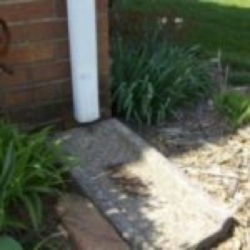 When water leaves the downspouts it needs to be directed away from the structure. Newer homes usually have underground drainpipes connected to the downspouts while older homes carry the water safely away by means of “splash blocks” installed at the downspout’s. Without either of these water will find its way into and under the foundation. Consequences: standing water in the crawl area, mold, mildew,
When water leaves the downspouts it needs to be directed away from the structure. Newer homes usually have underground drainpipes connected to the downspouts while older homes carry the water safely away by means of “splash blocks” installed at the downspout’s. Without either of these water will find its way into and under the foundation. Consequences: standing water in the crawl area, mold, mildew, 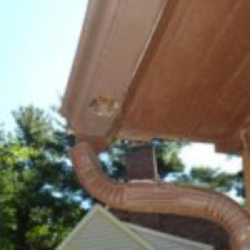 These problems allow water to flow off the roof uncontrolled. When this occurs, water will find its way into the siding, trim, windows, doors, foundation and other areas where it is not wanted. Consequences: erosion, dry rot, foundation damage, landscape damage, siding damage, window and door damage, crawlspace moisture, mold and possibly structural damage. Potential repair cost: $2,000- 20,000
These problems allow water to flow off the roof uncontrolled. When this occurs, water will find its way into the siding, trim, windows, doors, foundation and other areas where it is not wanted. Consequences: erosion, dry rot, foundation damage, landscape damage, siding damage, window and door damage, crawlspace moisture, mold and possibly structural damage. Potential repair cost: $2,000- 20,000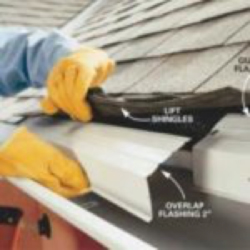 A very common short-cut made my some installers is a lack of flashing between the back of the gutters and the wooden support structure of the roof. Without flashing, bare wood is exposed to the water and debris passing through the gutters. Consequences: Dry rot, termites, roof rot and insect infestations. Potential repair cost: $500-$10,000
A very common short-cut made my some installers is a lack of flashing between the back of the gutters and the wooden support structure of the roof. Without flashing, bare wood is exposed to the water and debris passing through the gutters. Consequences: Dry rot, termites, roof rot and insect infestations. Potential repair cost: $500-$10,000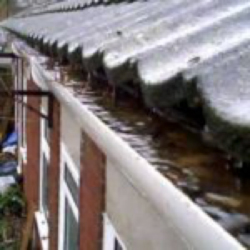 Improper location of downspouts, or not having enough of them especially during our Texas deluges, can lead to standing water and overflows. Consequences: erosion, mosquitoes, rust through, roof damage, foundation damage, siding damage and damage to the gutter support system and roof from excess weight. Potential repair cost: $500-$10,000
Improper location of downspouts, or not having enough of them especially during our Texas deluges, can lead to standing water and overflows. Consequences: erosion, mosquitoes, rust through, roof damage, foundation damage, siding damage and damage to the gutter support system and roof from excess weight. Potential repair cost: $500-$10,000 Defective gutter pitch–having the gutter sitting at a wrong angle–prevents water from flowing to the downspouts. This slows the water’s exit and can create areas of standing water. Consequences: erosion, mosquitoes, rust through, roof damage, foundation damage, siding damage and damage to the gutter support system and roof from excess weight. Potential repair cost: $500-$10,000.
Defective gutter pitch–having the gutter sitting at a wrong angle–prevents water from flowing to the downspouts. This slows the water’s exit and can create areas of standing water. Consequences: erosion, mosquitoes, rust through, roof damage, foundation damage, siding damage and damage to the gutter support system and roof from excess weight. Potential repair cost: $500-$10,000.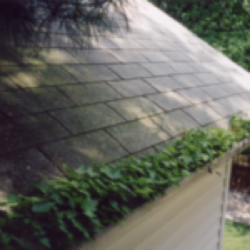 Allowing shrubs, ivy and trees to overgrow the gutters can cause considerable problems. We’ve seen gutters filled with vines to the point they are no longer functioning. Sometimes the weight even pulls poorly attached gutters away from the home. Consequences: gutter, roof and structural damage, foundation damage, siding damage, window and door damage, termites, ants. Potential repair cost: $2,000- 12,000.
Allowing shrubs, ivy and trees to overgrow the gutters can cause considerable problems. We’ve seen gutters filled with vines to the point they are no longer functioning. Sometimes the weight even pulls poorly attached gutters away from the home. Consequences: gutter, roof and structural damage, foundation damage, siding damage, window and door damage, termites, ants. Potential repair cost: $2,000- 12,000.